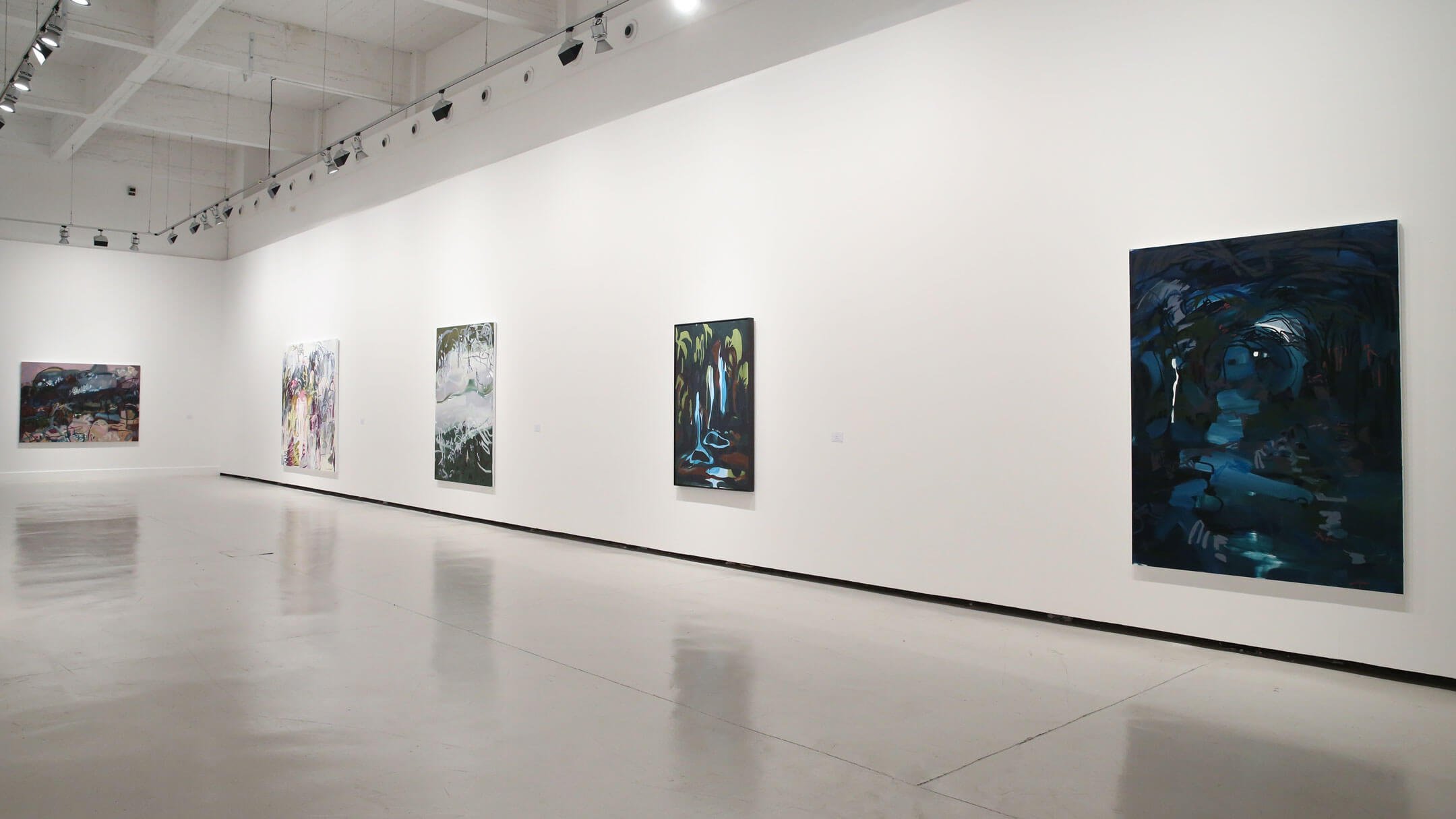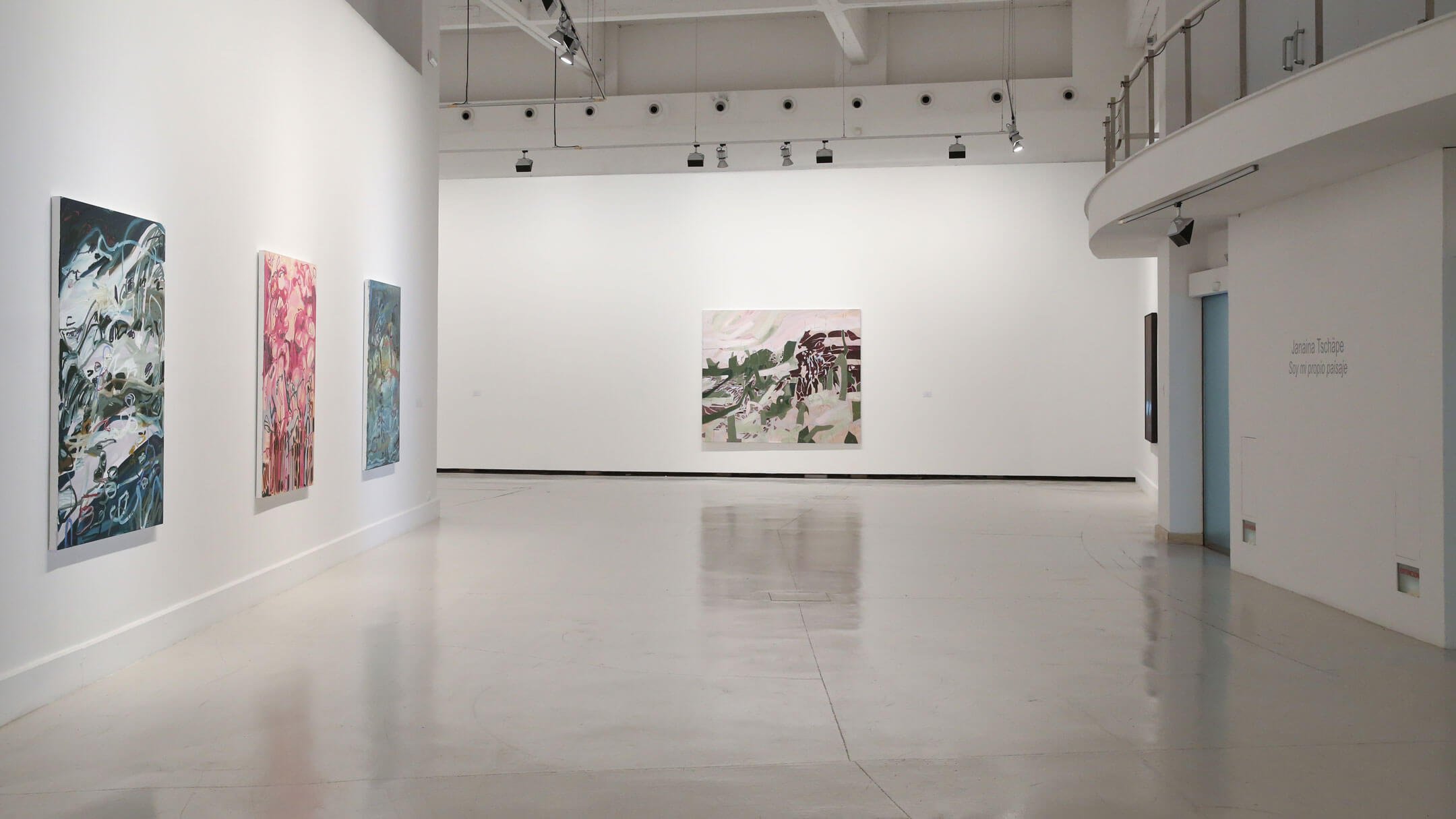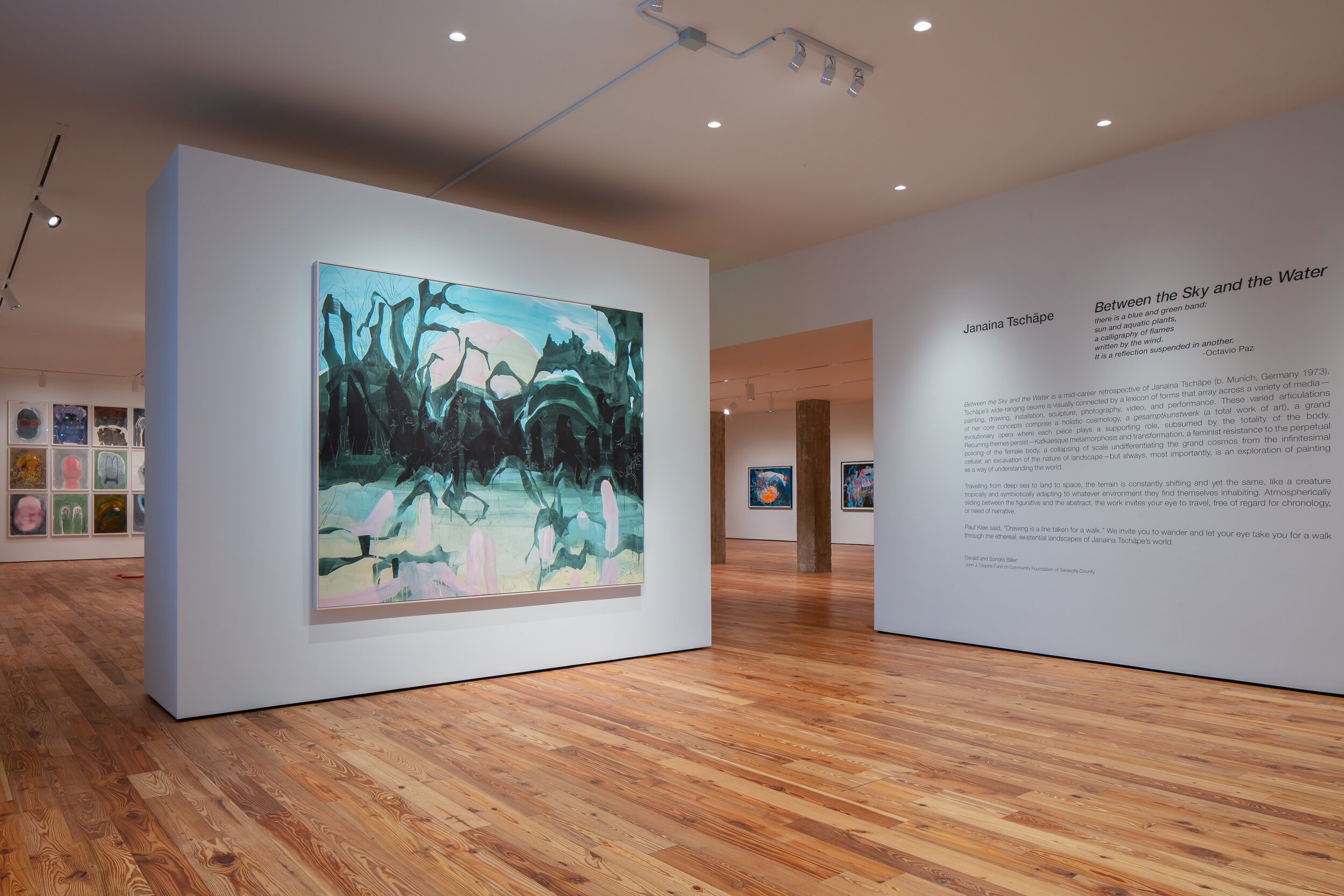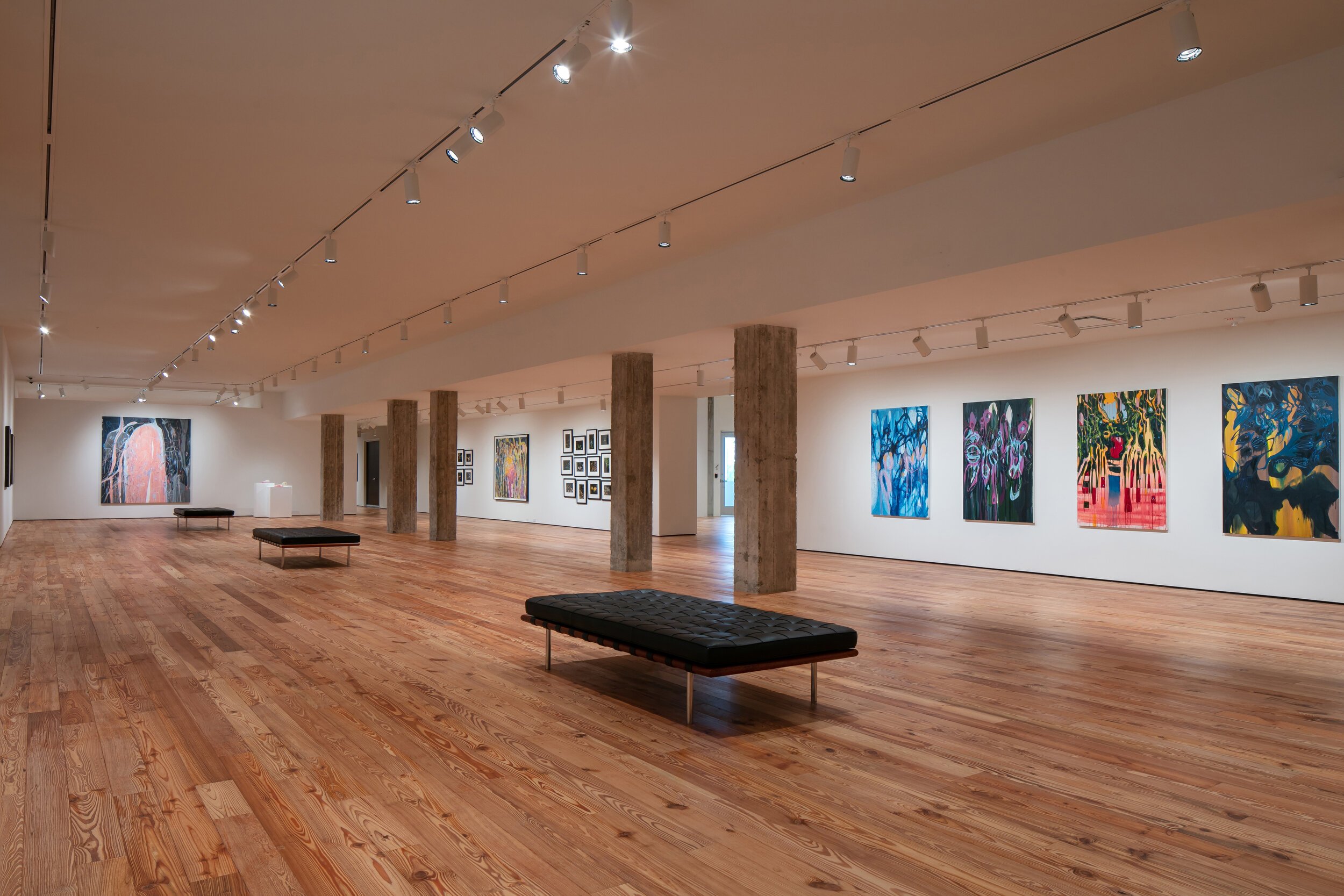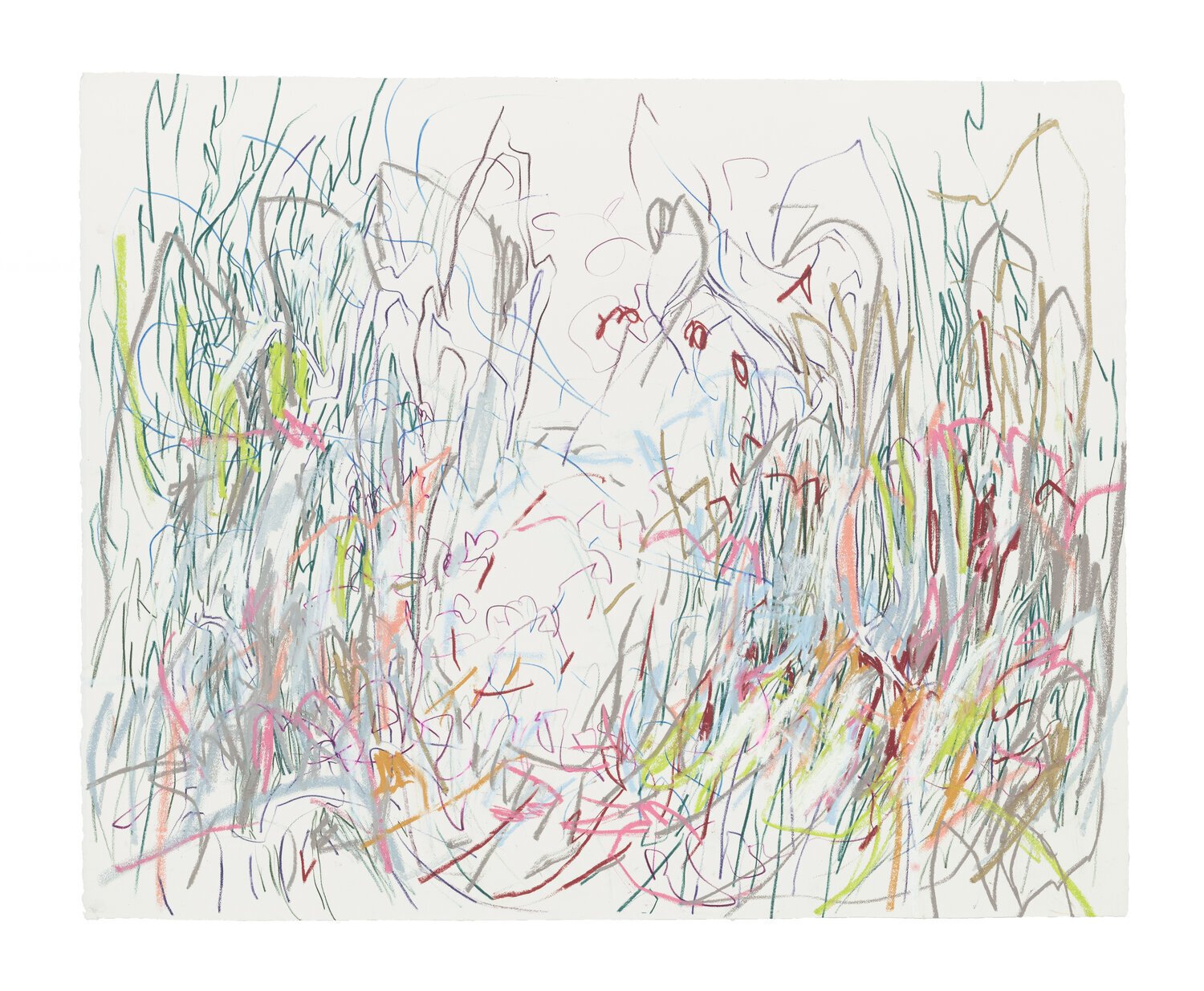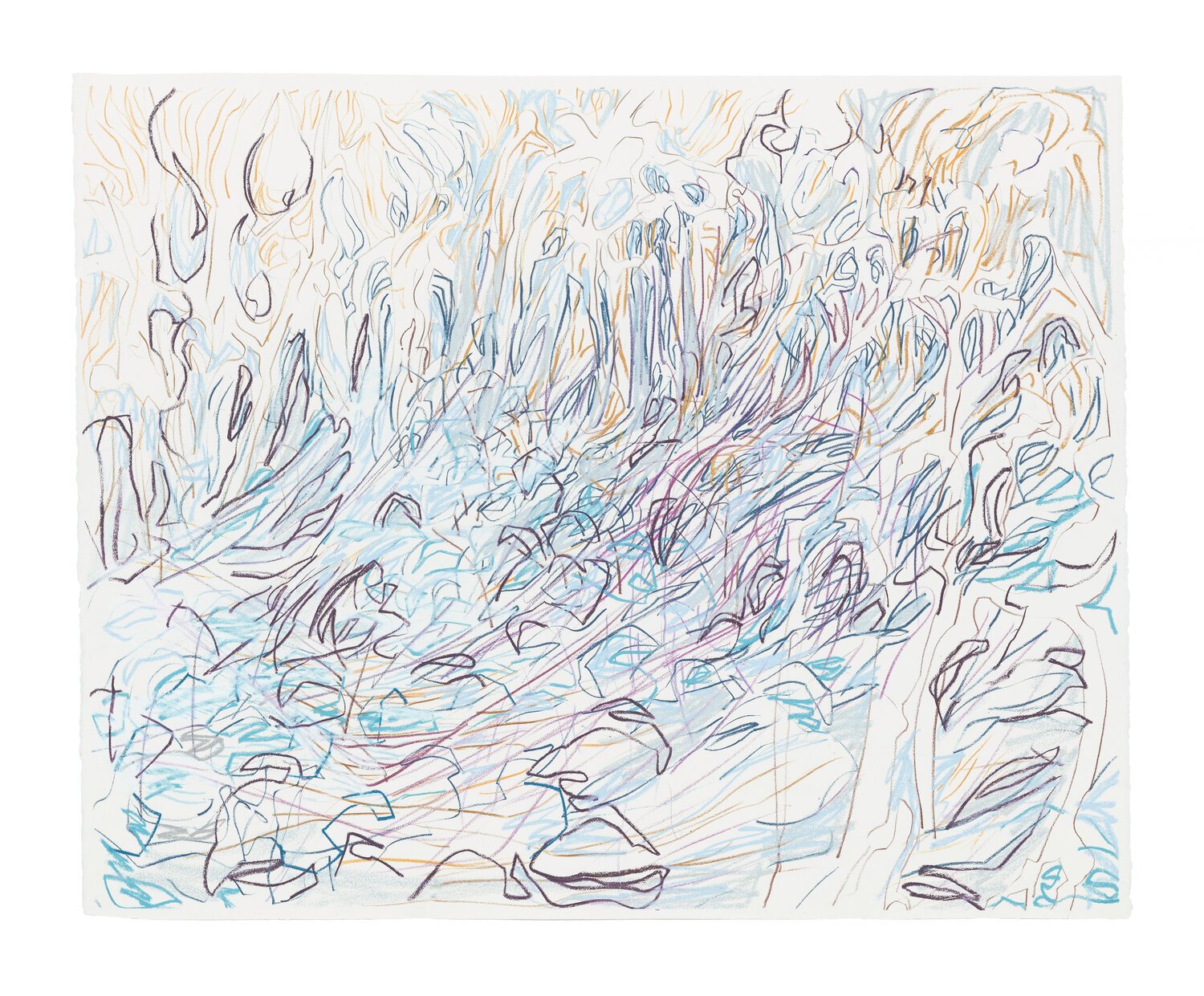Janaina Tschäpe
German, b. 1973
Contemporary Counterpoint at Musée de l’Orangerie, 2020 © Sophie Crépy / musée de l’Orangerie.
Janaina Tschäpe at Musée de l'Orangerie,2020
Janaina Tschäpe was born on 1973 in Munich, Germany and was raised in São Paulo, Brazil. She received her Bachelor of Fine Arts from the Hochschule fur Bilende Kuenste, Hamburg and her Master in Fine Arts from the School of Visual Arts, New. The artist lives and works in New York.
Exploring all kinds of landscapes, Tschäpe’s work is an invitation to an extraordinary world, a sensual place full of malleable creatures and amorphous beings. Through various forms of expression, the artist constantly reinvents perceptions of the natural world, making use of a dynamic combination of photography, drawings, paintings and sculptures. Together these mediums work to bring the observer into Tschäpe’s watery, organic universe, one of curiosity, astonishment and wonder.
Water has a big weight on her work; one can observe its contribution and manifestation throughout most of her medias, its presence found in most of her work. Not only its fluidity, but also the layered aspects it builds, extensively investigated in her paintings and drawings, or as the field for sundry creatures and entities performed on her photographs and videos Water also works to render the sensual feminine world she embraces: the fertile universe of her fantastic subjective science. Jellyfish, mermaids, octopi, seahorses… The references are endless, creating a chart of extraordinary organisms inspired by memories, myths and dreams. Curiously, Tschäpe shares her name—Janaina—with a Brazilian sea goddess of the Candomblé religion.
The multifaceted structure of Tschäpe’s creative process functions as an attempt to organize and “categorize” her creatures, invents based on memories, myths and dreams, opening up a dialogue that subverts our usual perceptions of landscapes and beings, realigning our vision of the landscape and nature in general. Thriving for an endlessly prolific universe, Janaina is also somehow measuring time. As she writes, “You look at something and try to find out where it ends. So the contemplation of a landscape is always a search, the search of something new, the search of time.”
While in her earlier works Tschäpe often placed herself within the landscape, she now explores her memories, her inner after-images, conjuring her travels and expeditions to a deeply-layered remembrance. Whether through her paintings and drawings or photography and film, Tschäpe reacts to her life experiences in an intense meditative contemplation of the landscape.
Please find more information here.
Selected Videos
Soy mi propio paisaje (I Am My Own Landscape), CAC Málaga, 2023
-
The CAC Málaga presents I Am My Own Landscape by Janaina Tschäpe
From 22 September to 3 December 2023
The CAC Málaga presents I Am My Own Landscape, the new solo museum exhibition by New-York-based, German-Brazilian artist Janaina Tschäpe (Munich, Germany, 1973). The show, curated by Helena Juncosa, is Tschäpe’s first solo exhibition in a museum in Spain in twenty years. It comprises one hundred and twenty works – including paintings, drawings and photographs – produced over the past two decades. Tschäpe’s evocative compositions, featuring abstract landscapes that distort the perception of reality, present images that evoke the natural world, suggesting growth, transition and metamorphosis. Her interests, together with memories inspired by natural phenomena – leaves swaying in the wind, rushing water or changes in light and darkness – are translated physically into a distinctive language of abstraction that is deeply personal and open to interpretation. Tschäpe celebrates the power of painting as a way of understanding the world.
Following the artist’s evolution over the last two decades, Janaina Tschäpe’s I Am My Own Landscape includes painting, drawing, engraving and photography. Her first projects were related to the field of performative photography and video, featuring fantasy creations and dreamlike landscapes inspired by the world of nature and populated by an array of strange characters. Such is the case of her Botanica Series (2004-2005), on display in the present show, in which the artist creates photographic scenarios inhabited by peculiar plant species and artificial fungi, exhibiting the most unlikely colours and shapes, that are entirely fictional but bear scientific-sounding names.
In her work, Tschäpe sets up a dialogue between Brazilian Baroque and German Romanticism, using a visual language that oscillates between representation and abstraction. Throughout her career she has worked in different fields and experimented with a variety of materials, employing diverse techniques such as drawing, painting, engraving, photography, sculpture, performance and video. In the present exhibition, the public will be offered predominantly abstract works ranging from conceptual photographs to drawings and watercolours.
Tschäpe’s output has evolved over time. While continuing to focus on the same themes – botany, marine biology and nature in its broadest sense – the spaces she now depicts are completely devoid of figures. Her work references nature in its entirety – seas, mountains and forests – and seeks to represent the “idea”, rather than formally characterising specific locations. By creating microcosms out of fragments of nature, the artist focuses on small fractions of the world in order to represent “the whole”. As the German playwright Johann Wolfgang von Goethe said, “Nature is a living organism and human beings are but a small part of it; partaking as they do in nature, they cannot detach themselves from it”. By means of this perspective, Tschäpe shapes her images through an emotional, spiritual and physical response that invites the viewer to be as much a part of the landscape as she is herself.
“I am interested in incorporating the unpredictable: a bolt of lightning, a storm; in short, I am interested in the effects that nature produces in the work, I let it take its course.” Throughout her career she has used materials such as casein, watercolour, coloured pencils or crayons, to endow her works with a sense of fluidity and transparency, as in Leise (2017) and Pink Swamp (2019), both included in the present show. In contrast, her most recent works are based on experimenting with the interaction between drawing and painting, a goal she achieves by using oil paint and oil sticks. These give her pieces a materic feeling which was absent from her previous creations, as the paint adds density to the work. By abandoning the ethereal and translucent texture of her former materials, the artist is able to create pieces that are more gestural and fluid, using the paint and the grooves traced by the oil sticks on the surface of the work as part of its composition and gestural message.
“I want the brushstroke to conquer the canvas… For me, painting means to feel something very closely, to be physically in the present, body and soul.” I Am My Own Landscape centres on this idea of human beings as a small fraction of the natural world of which they are a part, just as the artist is part of the abstract landscapes presented in her work. Tschäpe’s approach manages to establish a conversation between painting and drawing through a physical response in which, using herself as an extension of the pictorial medium, she shapes emotions, sensations and experiences and becomes her own landscape.
Sharing its title with the name of the present show, I Am My Own Landscape (2018) is a series of thirty-six watercolours on paper, suggesting an identification of the artist with her painting in a succession of self-portraits in which traditional figurative representation is disregarded in favour of a portrayal of the emotions and thoughts that are born during the act itself of painting. The works are named after different places: New York; Ilhéus, a city on the coast of Brazil; Tulum, a beach in the Mexican Caribbean; or Lopud, an island in Croatia. These pieces constitute a sort of travel diary of what is ultimately an inner journey.
Another of the works that stands out, also featured in the exhibition, is the series Self-Portraits (2020-2022), done in the form of a diary using watercolour on paper. In these schematic pieces, executed with swift strokes of the brush, the artist seeks to represent the conditioned transformation a person undergoes under the influence of the environment by capturing her personal perception of the “inner view”: the subject’s soul or what we might call the secret landscape of the self.
Janaina Tschäpe was born in Munich (Germany) in 1973, and later settled in Brazil. There she began her research into local art and met artists such as Lygia Clark and Hélio Oiticica, developing close links to the second of her two cultures. At the Hamburg Academy of Fine Arts, where she took her degree, she experienced her first encounters with the world of art and its history, devoting particular attention to the German tradition. Tschäpe studied with artists belonging to the Fluxus movement, who were close to Joseph Beuys – one of the group’s key figures of reference – and her first creative projects took place in the field of performance. She has been influenced by artists such as the Surrealist Henri Magritte and the experimental film-maker Maya Deren, among others.
“I have a very romantic, very German vision of art, and there’s also my performative side, which I formally acquired in Germany, but I think has more to do – intuitively speaking – with Brazil.” Throughout her career, Janaina Tschäpe has exhibited all over the world. Some of the institutions that have hosted solo shows of her work include: the Den Frie Centre of Contemporary Art (Copenhagen); the Sarasota Art Museum (Florida); the Musée de l’Orangerie (Paris); the Museum of Contemporary Art, (Tucson, Arizona); the Kasama Nichido Museum of Art (Kasama, Japan); the Irish Museum of Modern Art (Dublin); and the Contemporary Art Museum St. Louis (St. Louis, Missouri).
The artist has also taken part in numerous group exhibitions at venues such as the Lewis Glucksman Gallery (Cork, Ireland); the NCA Taipei (Taiwan); the Whitechapel Gallery (London); TBA21-Augarten (Vienna); CCBB (Rio de Janeiro); the Centre d’art contemporain de Normandie (France); the 21st Century Museum of Contemporary Art, Kanazawa (Kanazawa, Japan); the Instituto Tomie Ohtake (São Paulo); the Storefront for Art and Architecture (New York); the National Museum of Women in the Arts (Washington D.C.); the Pratt Manhattan Gallery (New York); the Museu da cidade de São Paulo – OCA (São Paulo); the Kunsthal KAdE (The Netherlands); Cidade Matarazzo (São Paulo); Ronnebaeksholm (Denmark); Centro Cultural Banco do Brasil Belo Horizonte (Brazil); the Museum of Fine Arts, Boston (Boston); and the Museum of Contemporary Art Taipei (Taiwan).
Her work is part of major public collections belonging to institutions like the Centre Pompidou (Paris); the Museo Nacional Centro de Arte Reina Sofía (Madrid); the Harvard Art Museums (Cambridge, Massachusetts); the Museu de Arte Moderna do Rio de Janeiro (Rio de Janeiro); the Moderna Museet (Stockholm); the Thyssen-Bornemisza Art Contemporary (Vienna); and the Solomon R. Guggenheim Museum (New York), among others.
Janaina Tschäpe has undertaken public commissions in New York City, Miami Beach, São Paulo, and Holbæk (Denmark).

